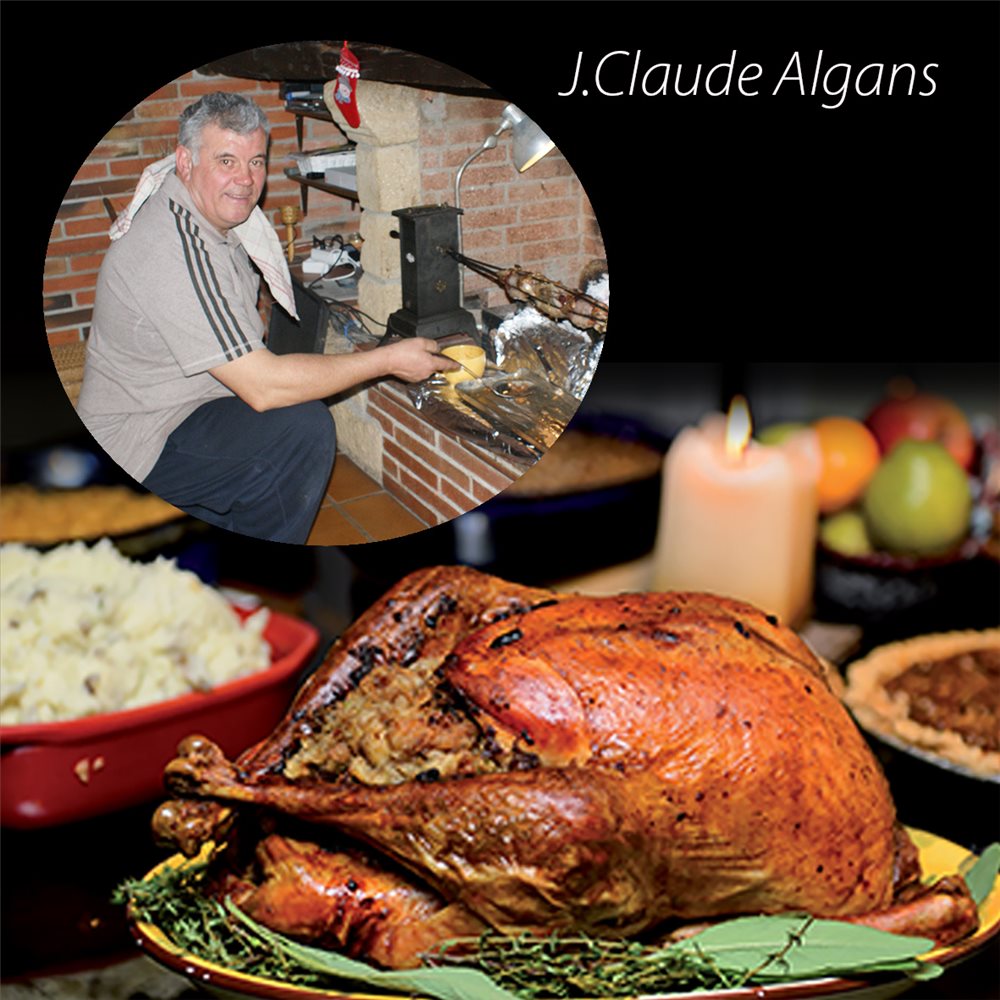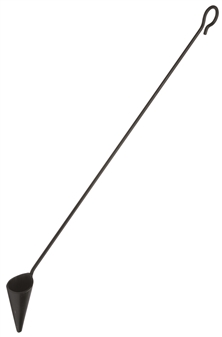Cooking stuffing on a spit
How to successfully cook stuffing on a spit. Practical advice for
meat, poultry, guinea fowl, capons...
"Goose, quail, capon - the question of stuffing is essential when it comes to spit roasting.
When I started, I carefully stuffed my roasts and allowed them to turn for a long time quite a long way from the fire so that the heat could penetrate the meat and cook the stuffing. A goose could turn gently for 6 or 7 hours and the results of this slow cooking were excellent, especially for large pieces: it is the ideal method. For small birds, however, that need to cook for less time, you can pre-cook your stuffing. Whatever process, stuff well and pack tightly on the spit. The remaining air will prevent the heat from communicating with and penetrating the stuffing: it slows down the cooking and this is not something you want.
Over the years, with experience, I have come to consider cooking my stuffing differently. I picture it as a kind of meat pie. I cook the stuffing and I simply don´t want the surrounding poultry to dry out or burn... I keep my spit a long way from the fire, I take my time, I look after my aromatic stock, watering regularly and at the end of the cooking time, if I want the meat to be a little browner, I simply draw it closer to the fire.
Technically, this way of seeing things changes nothing. But since I have considered the ""stuffing"" before considering the ""poultry"", I am much more at ease about the cooking.
Good to know
- Traditional stuffing is cooked when it reaches 68/70°C at its heart.
- The only way to know how the stuffing is cookign inside poultry
is by using a thermometer! With experience, you can manage without, but taking its temperature has never ruined a roast.
- A large stuffed bird can remain on the spit for 4 to 5 hours, or even 6 or 7 for a goose. Work away from the fire so that the temperature rises slowly.
- Use fatty stock to water. When it evaporates, the water reduces the surface temperature and the flavours will be more pronounced.
This text is a extract from Tompess Magazine n°11.
>> Become a subscriber
! "






































